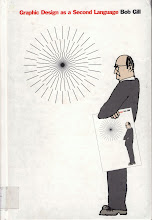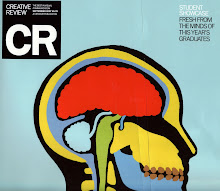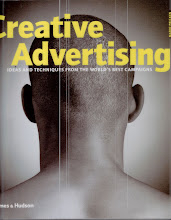
Fingerprint: The Art of Using Handmade Elements in Graphic Design
Chen Design Associates
CMYK's book review provided me with a new publication to add to my list; I have been passionate about a hands-on approach ever since the days of cutting and sticking during my Art Foundation year prior to coming to University. Following a recent loss of my beloved apple mac, along with the majority of my stored work, I was advised by Mike Sheedy (Head of Year) to make the most of idea development 'the old fashioned way'. It worked, and the project was my most successful to date.
"This book doesnt celebrate the completely unplugged, but by surverying design work with a degree of handmade.. is a welcome counterpoint to the smooth digital perfection we now encounter daily" (Glen Helfand, CMYK Spring/Summer 2007)












